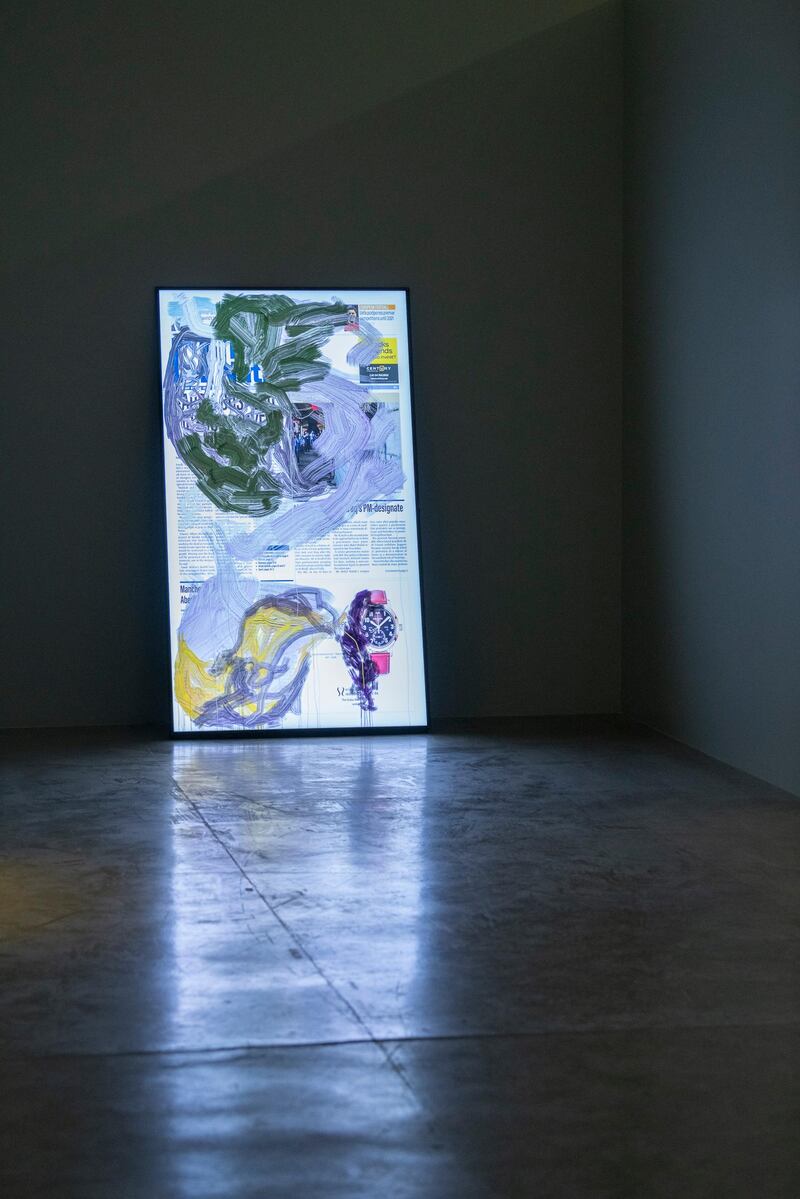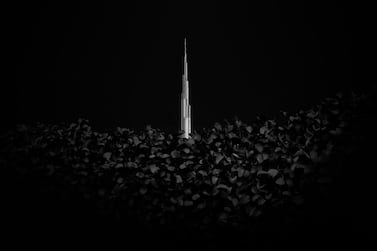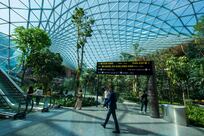People glued to their computers, checking social media first thing in the morning; misinformation spreading like wildfire; a low-level panic thrumming through the world – sound familiar?
This is the bleak portrayal of everyday life that Egypt-born curator Omar Kholeif was creating for the show Art in the Age of Anxiety, which was due to open last week at the Sharjah Art Foundation. It may sound like an uncannily prophetic exhibition amid the coronavirus crisis, but the show had actually been in the works for three years, one of a number of projects in which Kholeif has investigated the relationship between technology and isolation.
“I feel uncomfortable saying this is an exhibition about the coronavirus,” says the curator. “But it hints at the way people respond to certain kinds of information.”
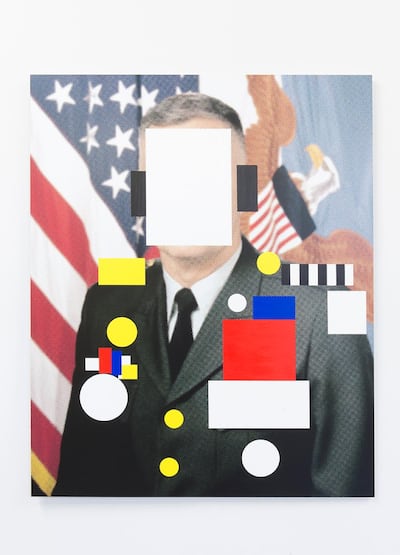
Although it couldn’t have foreseen the current pandemic, the show was inspired by a real event: a fake terror attack that took place in 2017 in London, on a busy, shopping-fuelled Black Friday. While at Selfridges department store in central London, British pop singer Olly Murs posted a series of tweets alleging that he had heard gunshots. Panic ensued, with at least one tube station being evacuated. It was a false alarm, although Murs maintains he heard the shots, and accuses the London police of a cover-up.
More ironically, the exhibition – which might have shed light on how to navigate a homebound, digital-led existence – has had to be closed, in line with the precautionary measures being taken across the UAE. All the work is sitting fully installed, with bespoke gallery architecture built inside the Sharjah Art Foundation spaces. The works are monitored for temperature and security, but no members of the public are allowed in.
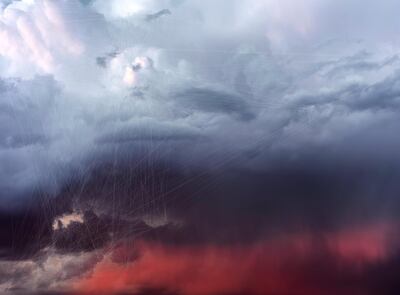
With the trend of galleries staging online viewings of their artworks, you would have thought Art in the Age of Anxiety would have made it to the web as well, but the physical architecture is particularly important here. The Foundation commissioned architect Todd Reisz to create a labyrinthine display, with dark walls that slant in, mimicking, explains Kholeif, the feeling of information rushing through fibre-optic cables.
“The power of the show comes from its ability to induce a sense of anxiety in the viewer – and then create moments of comfort,” he says. “It tries not to be fatalistic or defeatist, but to make you aware of these incidents of hysteria, and of how you use the internet.”
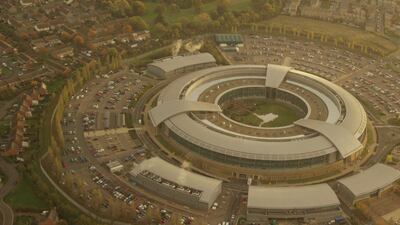
Kholeif says he deliberately peppered the show with moments of calm, such as Trevor Paglen's oddly meditative video Circles (2015), footage of a suburban office suite that he shot from a helicopter. The building's shape is noteworthy – perfectly round, with parking lots fanning out in concentric rings around it – but it seems otherwise unexceptional, until you learn that the building houses Government Communications Headquarters, the British intelligence-gathering organisation that was caught in a surveillance scandal in 2013. Whether the video remains a source of solace once that knowledge is gained can only be subjective. Like many of the artists in the exhibition, Paglen is fond of bait-and-switch: showing what appears to be an innocuous image – of clouds, landscape, water – but that is, in fact, the site of past violence or hidden political dealings.
A similar work by Lawrence Abu Hamdan, a Jordanian-British artist who currently lives in Dubai, is also on display. Five years ago while doing research at the MIT List Visual Arts Centre in Cambridge, Massachusetts, which specialises in art and technology, Abu Hamdan learnt that everyday objects can record sound. Known as visual microphones, your coffee cup, a packet of crisps, a tissue box can all convert vibrational data back into sound. For the photograph A Convention of Tiny Movements (2015-ongoing), Abu Hamdan colour-coded a hypermarket in Beirut: the items that can retain vibrations well enough to play back sound are coloured, while the rest of the grocery store goods are in grey. He has developed the concept further for the show, creating an audio installation across three galleries of sounds played back from a packet of crisps, a glass of water, a box of tissues, a Kit Kat wrapper, rose petals and a potted plant: a tour through false innocence.
This is the third exhibition in which Kholeif has addressed art and digital culture. As the movement of post-internet art was gaining traction in the mid-2010s, the curator was one of the first to address it for public institutions: first with Electronic Superhighway, which sought to address historical convergences between art and technology, at the Whitechapel Art Gallery in 2016, and then with I Was Raised on the Internet, which looked at the idea of “digital natives”, or younger artists for whom the internet has always been a given, at the Museum of Contemporary Art, Chicago in 2018.
Although he does not consider himself a digital native, Kholeif says media consumption has always affected his identity. “When I was growing up in Saudi Arabia, it was very much through television – then Orbit, a satellite television company – that I learnt about the outside world,” he says. “My relationship with media was integral to the construction of my identity, which also causes me anxiety. Who’s been shaping my identity?”
The major change from television to internet has been the capacity for feedback. Unlike a passive television audience, internet users shape the information they receive. Because of the algorithms governing social media feeds, everyone hears like-minded information and mistakes their biases for reality – the so-called echo chamber effect.
“Although the machine is algorithmically capturing our data on social media platforms that are owned by major corporations, we also fuel the machine,” Kholeif says. “The machine doesn’t exist without us. If we don’t share our content, the machine can’t function. In this exhibition,” he continues, “you are immersed to the point where you start to understand your own complicity.”
This complicity is everywhere – even here as you read these words. American artist Siebren Versteeg has created a new version of his famous work Daily Times (Performer) of 2012, in which an algorithm translated the front page of The New York Times into a digitally produced painting. For the Sharjah Art Foundation, he updated it using The National.
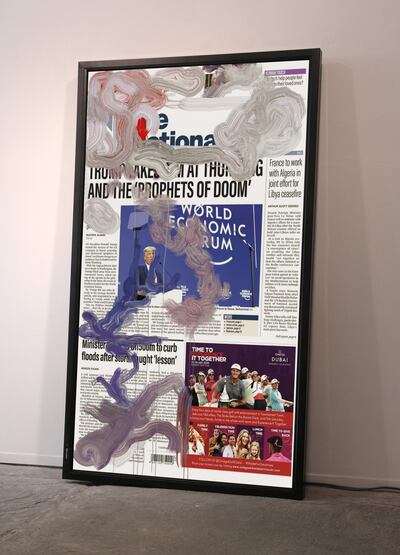
The work is continually refreshing itself based on the home page. Once the painting is finished, it reconnects to The National's home page to start generating a new work. Kholeif says the one he saw the last time he visited the shuttered exhibition was a beautiful serene red, "a textured red like a Rothko".
Red like a Rothko – or red from coronavirus coverage, I wonder. How much anxiety will there be – and how much solace? We can only wait to find out.
Art in the Age of Anxiety at the Sharjah Art Foundation is postponed until further notice. More information is at www.sharjahart.org
